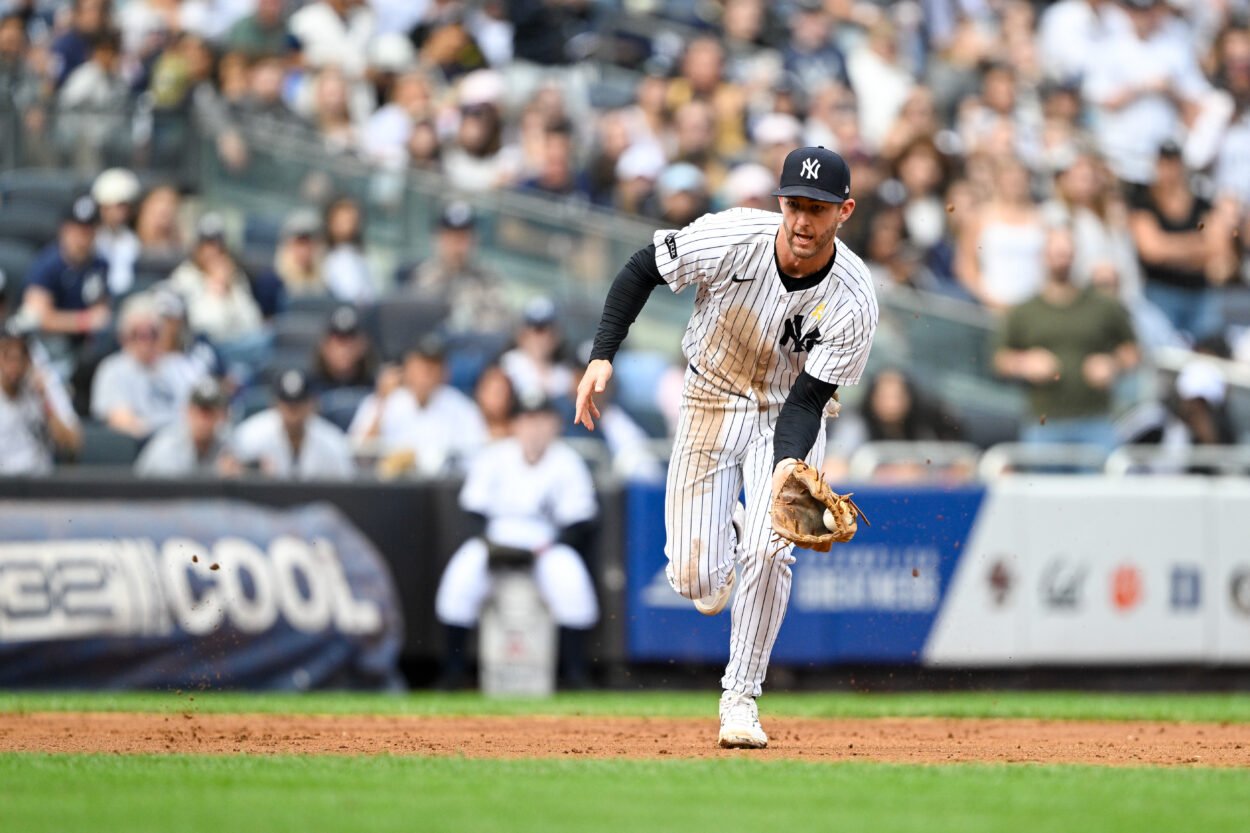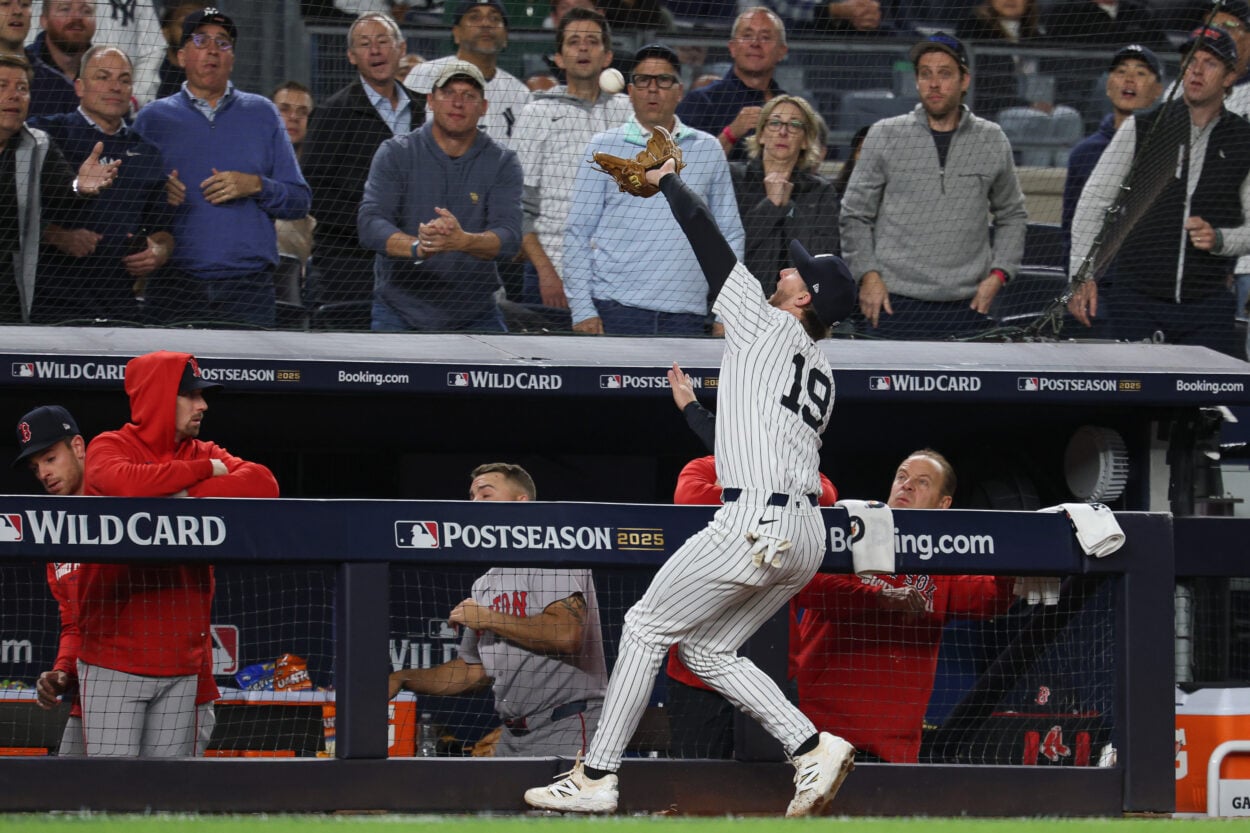
Being in the 2nd percentile of any statistical category in professional sports is usually a one-way ticket to the waiver wire.
When that category is “whiff rate” or “strikeout percentage,” it usually means you are packing your bags for Triple-A. Yet, for Ryan McMahon, those terrifying numbers are just one side of the most confusing coin in baseball. The New York Yankees have finally stopped the carousel at third base. After shuffling Jazz Chisholm over to second, watching DJ LeMahieu fade away, and hoping Oswald Peraza would figure it out, they have their guy.
But man, is he a complicated guy to root for.
McMahon is a walking paradox. He swings and misses like a pitcher trying to bunt, but when he connects, the ball screams for mercy. We are looking at a player who settled into the hot corner after the trade deadline and immediately stabilized the defense while confusing everyone with his bat.

The Violence of the Swing
Let’s rip the band-aid off. The swing-and-miss issues are legitimate. McMahon posted a 32.3% strikeout rate last season. That is lofty. In fact, it borders on unplayable if you aren’t hitting 40 homers. He ranked in the bottom 2% of the league in making contact.
However, look at what happens when he actually touches the baseball:
- Exit Velocity: 95th percentile
- Hard Hit Rate: 89th percentile
- Walk Rate: Nearly 12%
This tells a very specific story. McMahon possesses elite raw power and a decent eye for the zone, but his bat path has holes in it. He slashed .214/.312/.381 with 20 homers and an 86 wRC+. That is below league average.
Yet, the Yankees see the vision. McMahon has a habit of driving the ball the other way, but if the hitting coaches in the Bronx can get him to pull the ball just 10% more often, the short porch in right field is going to turn those long fly outs into cheap home runs. He has 30-homer potential sleeping inside that bat. He just needs to stop chopping air.
A Vacuum at the Hot Corner
If the offense is a rollercoaster, the defense is a luxury sedan.
This is why he is in the lineup every day. The New York Yankees haven’t had this kind of security at third base in years. McMahon is a legitimate Gold Glove caliber defender. Over 1,265 innings at third last year, his resume was flawless:
- .976 fielding percentage
- 10 defensive runs saved
- 6 outs above average
In the playoffs, pitching and defense reign supreme. Having a guy who sucks up everything hit to the left side of the infield is invaluable. He saves runs. He prevents innings from spiraling. You can tolerate a .214 batting average when the guy is taking away hits from the opposition every single night.

The Platoon Safety Valve
There is one glaring issue that cannot be coached away. McMahon cannot hit lefties. He batted .184 against them. It is ugly.
Fortunately, the roster construction accounts for this. This is where Jose Caballero comes in. The Yankees don’t need McMahon to be a hero 162 games a year. They need him to mash righties and play elite defense. On days when a nasty southpaw is on the mound, you plug in Caballero, keep the defense tight, and let McMahon rest.
It isn’t a perfect situation. Ideally, your starting third baseman doesn’t need a platoon partner. But Ryan McMahon brings elite tools to the table that the Yankees were desperate for. If he cuts the strikeout rate by even 5%, he becomes an All-Star. If he doesn’t, he is still the best glove they have had at third in a decade. That is a gamble worth taking.
